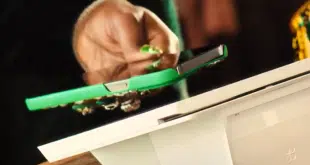It's one of the major products to emerge from the Check Clearing for the 21st Century Act (Check 21) signed into law in 2003, but remote deposit capture still has yet to make major headway despite getting some major bank backers and its promise of reducing the amount of paper checks being shuffled back and forth. According to a new report from Boston-based research firm Aite Group LLC, “Remote Deposit: All Talk, Little Action, With a Lot of Potential,” remote deposit is suffering from the unwillingness of banks to take chances on new technology as well as budgetary and security concerns. Last year, only an estimated 50 banks offered the service to business customers, according to Aite. With remote deposit, merchants and corporate offices scan checks and transmit the images to their banks instead of transporting paper. That reduces float and transit costs. Still, most banks are sitting on the fence, though some big ones attempting to cast themselves as technology leaders, including Bank of America Corp., KeyCorp, Mellon Financial Corp., and SunTrust Banks Inc., have begun offering it. “Banks hesitate until it's proven,” says Christine Barry, research director for wholesale banking at Aite. “For smaller banks, really the business case hasn't been there yet.” With banks playing wait-and-see, Aite estimates fewer than 5% of U.S. businesses are using remote deposit. And most banks offering the service aren't realizing the full potential cost savings because 95% are still printing substitute checks?the paper printouts of images permitted under Check 21–once images are received and presenting those checks to the paying bank, according to Barry. Barry says the newness of the technology is probably the most significant factor holding back bankers from offering remote deposit for business customers today, though they're watching developments in earnest. “If you ask them, almost all of them will say they are considering it,” she says. “There's a lot of excitement about remote deposit … but very few [banks] have a date for implementation.” Other brakes on the market include pressure on technology budgets and security concerns, though Barry says the technology is generally strong in that regard. Aite predicts bankers' hesitation gradually will give way, with 500 banks offering remote deposit in 2008 and 15% of companies using it by 2010. Growth of remote deposit will be tied closely with the growth and increasing maturity of image exchanges, Aite says. Claiming it was responding to demand from small financial institutions, Salt Lake City, Utah-based image-exchange software developer NetDeposit Inc. last month unveiled an all-in-one service aimed at helping banks easily roll out remote deposit (Digital Transactions News, Feb. 17).
Check Also
Fiserv Teams With Klarna to Offer Installments Through Clover Devices
In a dual announcement, Fiserv Inc. and Klarna AB said late Tuesday they plan to …





